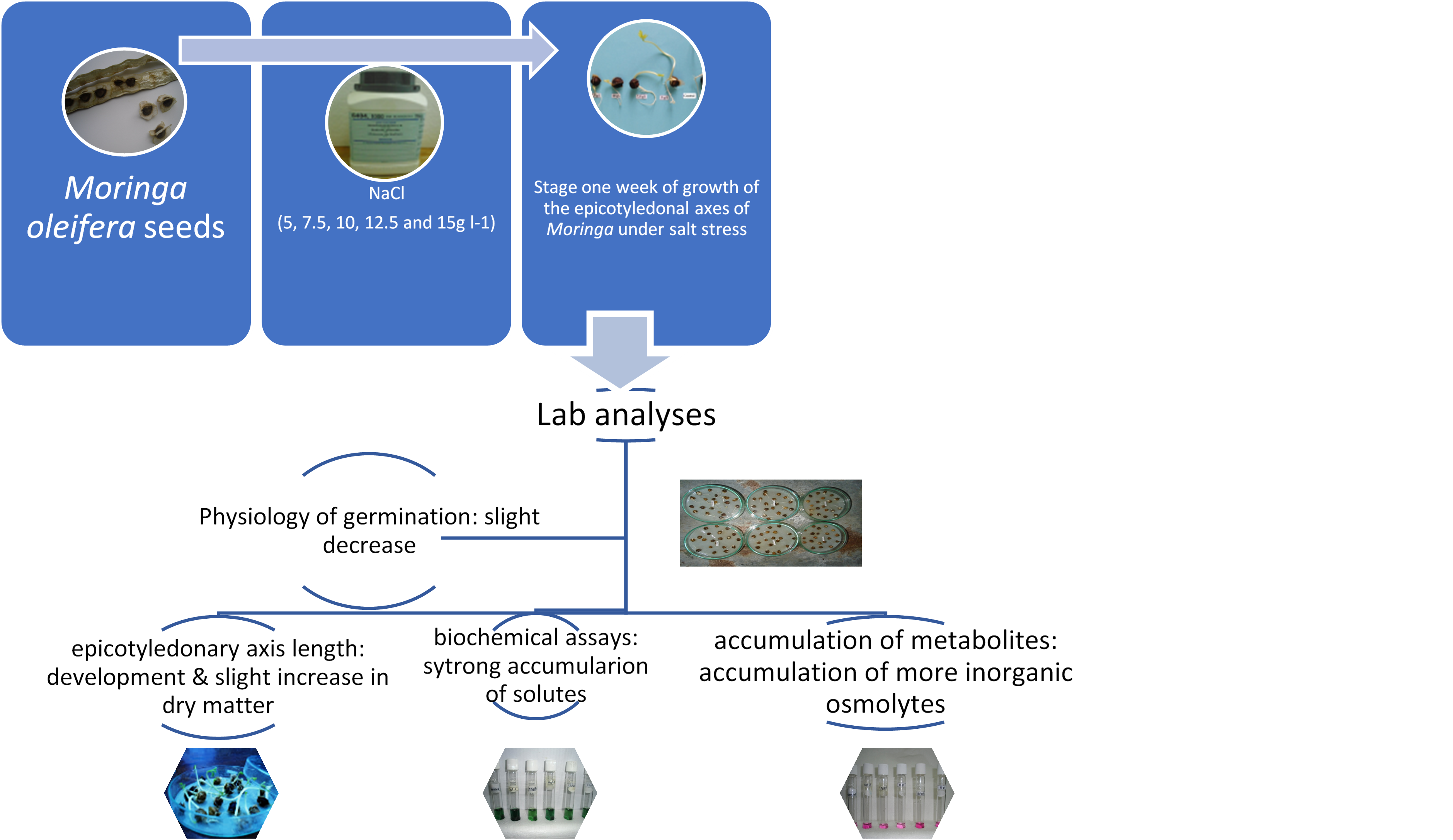
The current study explores the capacities of Moringa oleifera (L), to overcome and/or tolerate oxidative stress induced by a saline substrate as a constraining factor. For this, Moringa seeds have been treated for 15 days after germination in vitro with increasing concentrations of NaCl, and specifically at 0 (control), 5; 7.5; 10; 12.5 and 15g l-1. Morpho-physiological and biochemical aspects were evaluated which were considered as probable indicators of tolerance or sensitivity to this stress. Our results reveal an increased synthesis of proline, lipids, proteins, CAT, GPX, APX, flavonoids, condensed tannins and a decrease in total polyphenols (-29.97%), mainly due to their high carbon cost. The state of degradation of the cell membranes was evaluated by the MDA assay, which increased by 91.25%. On the other hand, the evaluation of the oxidative damage caused by Reactive Oxidative Species (ROS) was detected by H2O2, which decreased by 37.89%. Additionally, our results revealed a disturbance of the germinative power of the seeds indicating moderate resistance to stress as it was manifested by the development of epicotyledonary axes, even under 15 g l-1 of NaCl without showing symptoms of stress or sensitivity. This result supports our hypothesis of the ability of the species to maintain or even improve its oxidative status.
Total file downloads: 7